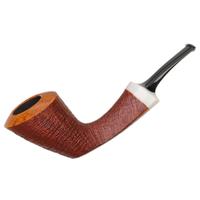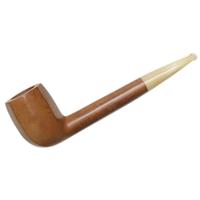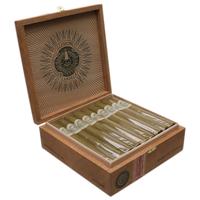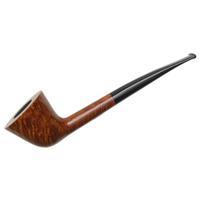The bane of my existance! Pipes that have been buffed so hard that the stem and shanks do not match... I have yet to find a method to "revitalize" nomenclature.
Sums up the problem and there is no way to restore nomenclature.
...It's not that hard to tell if a pipe has been over buffed.Usually,not only will the stamping sometimes be weak, but the rest of the surface of the pipe will have a wavy appearance and feel caused by the buffer removing the softer wood. That applies to stems as well,over buff and you may end up with a wavy surface.
Edsel from Murfreesboro?
You're correct that a wavy look/feel indicates poor handling. Can be any one or more of incorrect wheels (size, prep, material), buffer speed and torque, pressure against the wheel, cutting material (tripoli, white diamond and rouge that are all incorrect for wood but widely used). The condition the pipe and nomenclature (specifically) is the accumulated result of all buffing, handling and work, (etc.), since the pipe left the factory.
As you say, stems too accumulate wear, directly wear (teeth) or through buffing, etc., and the current condition is the sum of all use (and abuse). Bar compounds are acceptable for use with stems.
Never, I mean never buff a pipe unless the stem in inserted! I mean NEVER!!! Even with a gentle touch you can and will round the ends of both shank and stem and they will not sit flush.
Stem
inserted completely flush and
accurately oriented because even the slimmest gap or ridge will round.
Pipe cleaning takes a very gentle touch. Tripoli will strip a finish or re shape a stem. It must be used sparingly. No matter if Tripoli, white diamond, or carnauba. The buffing wheels alone need to be used with a gentle touch. ...If you are serious about learning how to refurbish pipes, buy a mess of cheap briars...beyond redemption and practise.
Good idea and before working take a moment to consider pipe and the impact of your intended work.
1 - Materials
a - Origin of briar. Do you know the properties of the briar's native soil? (hardness)
b - Hand cut or injection stem, vulcanite or acrylics.
2 - Finish
3 - Current condition
a - Understand what work was previously done.
b - Will you do more harm than good?
4 - What materials will you use


















